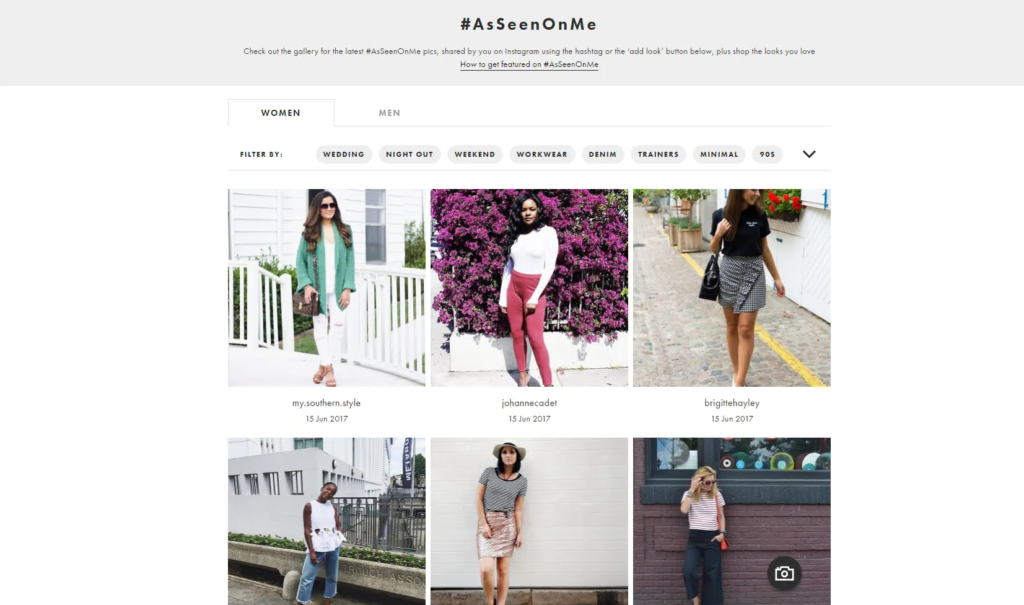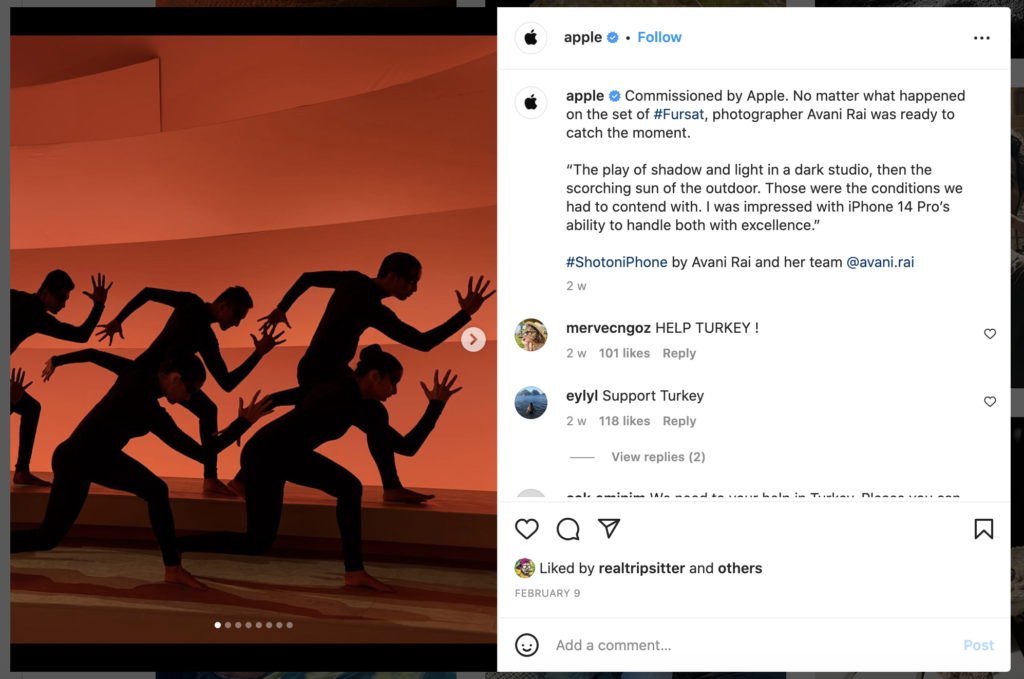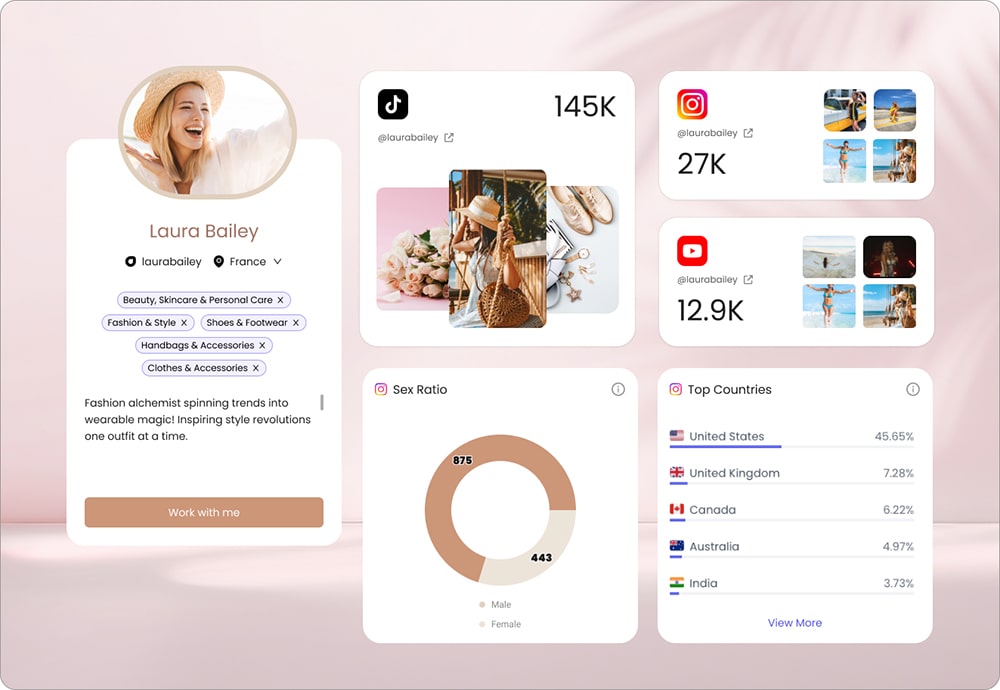User-generated content, or simply UGC, has been taking the Internet by storm, as more and more people are using the technologies available to them to share their favorite products with others.
From YouTube reviews to Instagram posts tagging your products, there are hundreds of ways users can choose to express their love towards your brand and products they love, without expecting anything in return. But are you taking advantage of it as best as you can?
If you are still not sure what UGC is, how it can help your brand, or how to leverage it, you are in the right place! In this comprehensive UGC guide, we’ll look into:
-
- What is UGC
-
- Why is it important
-
- What are the main types of UGC
-
- What are the main advantages of UGC
-
- How to use UGC in marketing
-
- Best practices of UGC
-
- … plus a few other things. Ready? Let’s get started!
What is UGC?
User-generated content stands for any form of promotional content, including text, visuals, and videos, which was created by customers of a brand rather than by the brand itself.
UGC, also known as consumer-generated content, can include a wide range of content types, including product reviews, unboxings, blog posts dedicated to a product or the brand, and anything in between.
In the last several years, UGC saw a significant rise in popularity due to the fact, that it’s seen as a more authentic and honest form of marketing. As a result, UGC is more effective and has been shown to increase website traffic, boost sales, improve customer loyalty, and help brands with any other marketing goals they may have.
UGC, also known as consumer-generated content, can be found in different places on the Internet and can be leveraged by brands for promotional and community-building purposes.
Importance of UGC in Marketing
UGC is becoming increasingly important in marketing for the same reason influencer marketing is so effective: customers are more likely to trust others talk about a brand than they are to trust the brands talking about themselves. As experience-driven and honest content, it’s one of the most authentic and trustworthy marketing materials that you as a company can get your hands on. Additionally, UGC allows brands to directly involve the audience in the process of brand growth, as opposed to them being mere spectators. This significantly improves brand loyalty, as people usually thrive when they are part of something bigger. Overall, UGC can help brands create a sense of community, and build trust around their products, which are two of the more important goals of any marketing campaign.
Types of UGC

User-generated content comes in many types and forms, and each one of them will bring something valuable to your brand. Here are some of the most common types of UGC today.
Social Media Posts
Social media platforms like Instagram, TikTok, Twitter, and others can be great sources for finding and leveraging UGC content. On these platforms, you can find UGC through branded hashtags, tags, and mentions. You can also encourage the users to create and share UGC on their social media platforms by resharing UGC other users have created.
UGC on social media can range from unboxing videos, recommendation stories, static images, or anything in between.
Customer Reviews
Do you check product reviews before you make a purchase? If yes, you are part of the whooping 88% of customers who check reviews before buying anything. And customer reviews also happen to be user-generated content. Ensuring that your brand has authentic (and positive!) reviews is an important part of any marketing strategy. You can leverage the power of customer reviews by encouraging people to leave reviews through incentives like small discounts, gifts, or any other strategy you may find fit. In the long run, this will benefit your brand greatly.
Blog Posts and Articles
Some UGC comes in the form of blogs and articles. In fact, long-form content where customers share their experiences or write about a particular topic related to a brand or industry is quite a popular online content format.
As a brand, you can leverage this type of UGS by encouraging users to write about their experiences with the service or a particular product and the state of the industry. You can also scout the internet and share existing articles about your products or services.
-
- Videos and Podcasts
-
- Photos and Images
Advantages of Using UGC in Marketing

UGC is becoming increasingly popular in the marketing world, and it’s no accident: it’s an incredibly effective marketing technique that also boasts a number of benefits. These benefits can then act together to have a significant impact on the success of the brand or product. Below are some of those benefits.
Authenticity
Today, when people trust branded content and ads less and less, one of the key benefits of user-generated content remains its authenticity. UGC provides a real-life perspective of brands and products that cannot be replicated in scripted content. User-generated content has a personal touch, as the creators are sharing their experiences, emotions, and honest opinion. This personal touch makes UGC more relatable and authentic, as it reflects the perspective of real people.
Another important factor here is the trust factor: in the case of UGC, creators have no “hidden agenda”. The creators are not endorsed in any way; so the content they create won’t be viewed as promotional but rather as evidence of their positive experience with the product or the service.
By using this authenticity, brands connect with their audience and build a loyal customer base.
Cost-effectiveness
Next up in our list of UGC benefits is its cost-effectiveness: your brand will have significant amounts on creating content as it’ll have access to promotional content created and shared by others.
This is especially beneficial for smaller brands or companies just starting out because asking customers to share about a product, or simply resharing their content (by giving credit, of course) costs next to nothing. The saved costs can include the finances spent on creating content, the shooting crew, the materials, and other potential expenses.
Increased Engagement
User-generated content is additionally a powerful way to increase engagement. And there are numbers to back this up: according to Shopify, UGC content attracts four times higher click-through rates than other types of marketing content.
Through using UGC, brands can demonstrate direct engagement with their audience by sharing and reposting their content on social platforms or the brand’s website. This creates an active and positive social media presence, which is also authentic and fun to watch. It also encourages more people to create and share UGC, as they’ll want to be featured on the social platforms of their favorite brand. Talk about killing two birds with one stone!
Building Community and Trust
Building a community around their products is one of the holy grails of marketing for brands, and UGC happens to help with this too. By using UGC, you can involve your audience to participate and contribute to the content, which will create a sense of involvement. You can additionally use UGC to encourage user feedback, which will both give you valuable information on how your brand is perceived and show your audience that their opinion is valued. Lastly, when brands feature UGC on their social platforms, they create a sense of belonging and community among their audience. This will, in its turn, significantly increase loyalty to the brand.
Saving Time and Resources
In addition to finances, creating content for social platforms takes up time and considerable resources, and this is especially true for branded content. One of the main benefits of UGC here is that it saves your brand significant time and resources because you get access to new promotional content you didn’t have to invest time to create; it’s already there.
By using UGC, brands can save significant resources on producing content in-house and marketing and community building. Additionally, UGC can help brands save costs and time on product development, customers provide insights into what they like or dislike about a product or service, which brands can then incorporate into their product development processes.
How to Use UGC Content in Marketing

It may seem so at first sight, but UGC marketing is not random or situational, but something that can be planned and used strategically. Below are a few steps you can take to make sure that you are leveraging the power of UGC for your brand correctly and to its full potential.
Choose the Right UGC Platform
Choosing the right UGC platform or platforms for your brand can make it significantly simpler for your brand to encourage users to create UGC content, and then use it for your goals.
For this, you can start by looking through the features of different platforms and understanding them in-depth, understanding the platform’s user base, taking a look at their terms of service, and in the end, sticking with the ones that align with your brand goals and values. You don’t have to stick with the social platforms themselves only, but make use of relevant third-party tools and platforms like ViralMango, which offer tools and solutions to make the whole process of discovering and utilizing, as well as encouraging the creation of UGC much simpler and quicker.
Find Relevant UGC
There may be a lot of users who create content about your brand, and it’s great. However, not all content will be relevant to your goals. Therefore it’s important that you take the time to understand what the relevant UGC is for you and then look for them across all platforms. This can be done through a combination of strategies including using social media listening tools, encouraging users to add specific relevant hashtags, and monitoring review sites and forums, to name a few options.
Seek Permission and Give Credit
When using UGC in your marketing strategy, always keep in mind that it’s, after all, content that was created by somebody else. Therefore, before resharing anything or using UGC in your strategy, always make sure to ask the permission of the creator and give them credit to avoid any unpleasant situations. Bonus point, this way you’ll also send a message to others that if they create UGC content about your brand, their work will be respected and they’ll receive the due credit.
Repurpose UGC Across Marketing Channels
You don’t need to limit yourself to one channel or keep the UGC in one channel strictly there. It’s a good idea to work with the UGC you’ve collected from different platforms by incorporating them into your marketing strategy across channels. For example, if you have positive reviews on Google or a funny comment you loved on YouTube, you can easily go ahead and use them to ignite conversation on Instagram. Some platforms may be more suitable for this than others (e.g. YouTube doesn’t give a lot of resharing options), but there is almost always a way to play around.
Use UGC to Create User Stories
If used correctly, UGC can be a powerful tool for creating engaging user stories. The first step for this is to identify your audience who create UGC for your brand, and then choose the right platform to collect UGC. Once you’ve collected the content, curate the most compelling pieces that align with your values, style, and messaging, and that work together to create a compelling story. Use these stories to demonstrate how your product solved their problems or somehow made their lives easier. These stories should feel authentic, and be as relatable as possible for your audience.
Showcase UGC on Your Website and Social Media
Lastly, you need to showcase the UGC on various platforms. You don’t need to be confined to one platform but can share different pieces of UGC across different channels, as well as your website. For example, you can showcase pieces of UGC content, as well as feedback was given by users on your website, and then share the product reviews you receive on your website to your social channels.
Best Practices for Using UGC in Marketing

Now, let’s take a look at some working best practices we recommend you keep in mind as you start implementing UGC into your marketing mix.
Stay Within Legal Guidelines
UGC is a powerful marketing tool, but when using it for your business goals, it’s important that you pay attention to the legal side of the situation. UGC is, after all, content created by someone else. Therefore, it is important to stay within legal guidelines when using UGC to avoid any potential legal issues.
A few rules of thumb for staying within legal guidelines with UGC are, as mentioned above, always obtaining permission to use the content from its creator, always attributing the creator by giving them credits, as well as ensuring that the UGC doesn’t infringe any copyright laws, and avoiding any false or misleading advertising.
By following these simple tips, you can eliminate a large part of any potential legal problems you may have faced.
Monitor UGC for Quality Control
UGC can be a great way to engage with your audience and create valuable content. With this said, it’s also critical that you control the quality of the user-generated content that you interact and engage with, to ensure that it meets the standards of your brand and messaging. For this, here are a few steps that you can follow:
-
- Clearly define your standards for UGC, such as guidelines, tone, and quality of the content
-
- Establish a monitoring process to review and approve the UGC content before it’s shared on your account
-
- Encourage your audience to provide feedback on the UGC that you post to understand the type of content they prefer to see
-
- Use different available tools to monitor UGC to identify areas for improvement
-
- Regularly following these tips can help you ensure that your UGC meets your standards for quality and aligns with your brand messaging.
-
- Engage With Users
-
- Engaging with users is one of the most critical aspects of UGC, and here’s why: it shows appreciation and encourages more people to create UGC content for your brand.
Make time every day or every couple of days to check who tagged you on posts, stories, or any other content, or who posted content related to your brand. Then, you can choose how to engage with them. If the content meets your quality standards, you can reshare it after getting the permission of the creator. Alternatively, you can like their posts and express gratitude for their efforts in the comments.
Maintain Consistency in Branding
As a brand, you probably have a visual style, a tone of voice, and values. These qualities are what constitute your brand guidelines, and they should be just as visible in the UGC content that you share.
For this, you need to first clearly define your brand guidelines, including your brand messaging, visual identity, and tone. You need to then communicate these guidelines to the users and encourage them to use these guidelines. Lastly, take some time to provide feedback to UGC creators on, for example, how their work aligns or doesn’t align with your voice.
As you define the standards of your brand for your UGC needs, your branding should be one of the non-negotiables. Then, when deciding which UGC to choose, go with the content pieces that resonate the best with your brand, and share only those. Otherwise, your followers may be confused.
Measure and Analyze UGC Performance
Lastly, to understand how your audience is engaging with your content and help you optimize your strategy, you need to measure and analyze its performance.
Start by setting goals, which can include targets related to reach, engagement rates, click-through rate (CTR), ROI and other metrics you’ve defined as important for your marketing needs. Then, use the social platforms’ built-in analytics tools or third-party tools to monitor the results. During the process, as well as at the end of fixed periods, spend some time analyzing the data you’ve collected: look at the patterns or trends in the data and identify the areas where you can tweak and improve your strategy.
Your UGC strategy shouldn’t be written in stone but should be flexible enough to evolve based on the new data you acquire. Make sure to regularly monitor the performance of your content, and adjust your strategy accordingly.
What is UGC Creator?

A UGC creator is someone who produces content that showcases a particular business or product but still appears authentic. The most common format for UGC creators is video, particularly on social media platforms like Instagram and TikTok. Creators typically film and narrate their content from their own perspective, which makes it feel more genuine. UGC creators can be anyone, from regular consumers to social media willing to share their experience with the brand to influencers or bloggers with thousands of followers, who create content such as reviews, photos, videos, or social media posts about a product or service professionally.
It’s important to note that UGC creators and influencers are not the same. They are key figures for successful marketing efforts, but they differ from each other in several ways.
UGC creators are individuals who create content based on the products that they used and liked (or disliked). UGC creators can also be influencers.
Influencers, on the other hand, are social media personalities with large following who promote products or services of the brands they cooperate with to their audience. Their posts may include sponsored content, and they almost always receive compensation for the content they’ve created and shared.
Another difference is that influencers are usually paid for both the content they create and the exposure to their followers. Meanwhile, UGC creators craft content for businesses without the requirement to post it on their own channels, and they are usually paid for creating the piece of content, not promoting it.
FAQ
How do you generate UGC?
While users are ultimately who decide whether they’ll be generating the content, you as a brand can give them incentives and drive them to do so. Here are a few strategies you can go with:
-
- Create shareable content that is fun, interesting, and useful
-
- Run contests and challenges on social media that drive people to create and share content dedicated to your brand
-
- Ask customers to leave reviews whenever you can, e.g. a few days after they’ve received their order
-
- Partner with UGC creators for them to create content about your brand
-
- Share UGC on your channels
Whatever approach you take, make sure it’s one that encourages participation, creativity, and community.
What is an example of UGC?
Pieces of UGC content can vary from each other significantly. Here are a few examples of UGC content we like for your reference and a bit of inspiration.
Asos #AsSeenOnMe
In the frames of their #AsSeenOnMe campaign, the online store Asos created a special page decided to showcase the clothes their customers purchased from them. The page linked to the posts of the users, who, in their turn, could add images directly to the web page, or link them from social media.

Starbucks White Cup Contest
Starbucks White Cup Contest is one of the most-cited UGC examples to date. Starbucks invited people all over the internet to draw on their signature white cups, and share the results on their social media, tagging the brand. In exchange, the users could win a $300 gift card they could use in the coffee store, as well as have their design printed on reusable cups.

Apple’s #ShotOniPhone
In 2014, when phone cameras weren’t particularly good, Apple initiated its #ShotOniPhone UGC contest to showcase the quality of the iPhone’s camera. The campaign encouraged iPhone user to shoot and share real-life images and videos to showcase just how powerful the cameras of the phones were. 8 years later after its initial launch, the campaign is still going strong, attracting thousands of pieces of UGC for the brand.

Is Instagram a UGC platform?
Yes, Instagram is a UGC platform, which means that the content on the platform is primarily generated by the users, who can then use the space to create content about their lives, ideas, and hobbies, as well as products and brands they enjoy. The platform also encourages the users to create and share UGC with features such as story creation tools, in-app photo editing, branded and clickable hashtags, user tagging, and more. All of this makes Instagram the perfect platform for brands to scout for UGC and use the content as part of their marketing strategy.
Is YouTube a UGC platform?
Yes, similar to Instagram, YouTube is a UGC platform, where users are the ones to generate and share content.YouTube allows users to upload both short- and long-form videos to the platform, and these can range from personal blogs on any topic to professionally developed content by media companies and large brands. This includes also review videos, which are a large segment on the platform, and which people search for more and more often before making a purchase. Brands can leverage the power of YouTube UGC by incentivizing users to create UGC about a brand on YouTube or by sharing and promoting existing ones.
Conclusion
From static UGC on Instagram to long-form YouTube videos to detailed explanatory blog posts, there are so many ways people can talk about your product. What you need to do for this is to give them a little push. Start by sharing the already existing posts that you can find. You can then move on to encouraging people to get involved more actively. And luckily, UGC breeds UGC, and with the right approach, you’ll get more people talking about your company in quite a short time, and then grow a loyal community of customers.
Reviewed By Rem Darbinyan
Revolutionizing industries with AI, Rem Darbinyan is the CEO of ViralMango and an entrepreneur, AI expert, and influencer marketing strategist.




